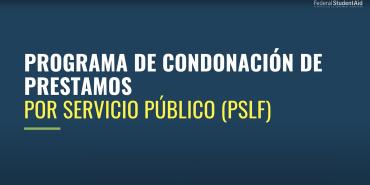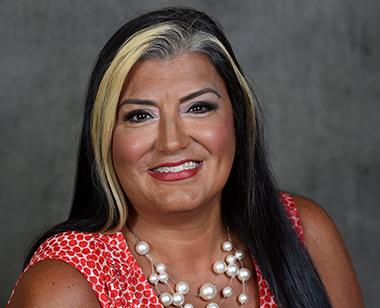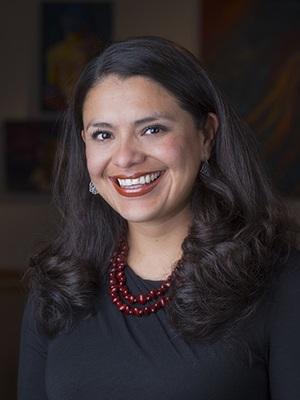Editor’s note: To read this article in Spanish click here.
More than 200 people gathered virtually Sept. 27 and another 400 registered to tune in later, eager to learn about student debt relief at a webinar organized by the AFT and conducted in Spanish. Like the hundreds of webinars and in-person debt clinics the AFT and its affiliates have offered over the past several years, the webinar laid out the pathway to erasing student debt, emphasizing new policies like the Biden administration’s loan forgiveness program and changes that ease requirements for qualifying for Public Service Loan Forgiveness. This was the first webinar the AFT has conducted in Spanish.
“I love seeing people’s faces when they realize that after years—sometimes decades—of crushing student loan payments, they may finally get some relief,” AFT Executive Vice President Evelyn DeJesus told participants. “I love seeing the hope in our members’ eyes when their PSLF waiver finally gets approved, or when they get to speak about what a little debt relief means to them or their families. Those savings can mean the difference between affording rent, or maybe even a down payment on a house. They can help people get access the middle class, and the basic building blocks of a better life that for too long have been out of reach.
“Getting this issue right is an issue of moral, racial, and economic justice. It’s also very, very practical.”
Overcoming doubt
For Alfredo Castro, an after school programming coordinator and a member of La Joya Federation of Teachers, the resources for accessing student debt relief were an unexpected success.
Castro, who was a paraprofessional and then a teacher before he took on the after school program at his elementary school in La Joya, didn’t think he would qualify for the program, but he “jumped through the hoops” anyway, encouraged by union organizers. He loves working with his students, who are 95 percent Latino, and he never expected to get rich working in education. But with a debt that has nearly doubled since he first took out his student loans, he was ready for a break.
Working one on one with Summer, the free member benefit that assists borrowers through the process of getting student debt relief, he was able to erase $45,000 in debt. “I couldn’t believe that I could get forgiveness,” he says. “It was a big relief.” Now he hopes to further his education and fulfill his dream of becoming a school principal.
Hope renewed: fresh opportunities for debt relief
Castro is not alone in doubting he would qualify for relief: Many borrowers have tried to apply for Public Service Loan Forgiveness, or PSLF, but failed. The federal program was designed to encourage borrowers to go into public service jobs such as teaching, school staffing, nursing and state, municipal or federal jobs, by forgiving all student debt for public service workers who have made 10 years’ worth of student loan payments. But for years qualifications and applications were so complicated and the system was so broken that only 2 percent of those who applied were granted relief. The AFT and others worked hard to change that, through lawsuits and advocacy at the policy level.
Now, the Biden administration has temporarily eased requirements for PSLF, and many people who were rejected from the program now qualify. To date, 175,000 people have discharged over $10 billion in student debt through PSLF.
Montserrat Garibay, a former vice president with Education Austin who is now acting assistant deputy secretary of the Office of English Language Acquisition and director and senior advisor for labor relations in the office of the secretary of education, walked clinic participants through a number of options for lowering or erasing their student debt. Others on the panel, which was co-organized by the Department of Education and the AFT, completed the picture:
- The Biden administration has announced it will erase $10,000 in federal student loan debt for any borrower who earns less than $125,000 ($250,000 for couples filing jointly), and $20,000 for people who had Pell grants. Applications for this relief are expected to be in place on the Department of Education’s website by the end of the year.
- The Department of Education has extended the pause on monthly loan payment requirements that was initiated during the pandemic until Dec. 31.
- A temporary waiver of many confusing and strict requirements associated with Public Service Loan Forgiveness has made it possible for borrowers to qualify now, even if they’ve been rejected in the past. The waiver expires on Oct. 31, so borrowers must apply soon.
- Summer is an AFT member benefit that guides borrowers through the details and changes in the student loan system, taking into account their personal loan history and in most cases saving them thousands of dollars in loan payments and often leading to complete loan forgiveness.
Participants also heard personal stories loan relief success stories from colleagues.
En español
Currently, more than 62 million Hispanic people live in the U.S., nearly one-fifth of the population. By 2050, 1 in 3 U.S. citizens will be Latino. Many borrow money to attend college—and so comprise a substantial portion of the 45 million people currently burdened with student debt.
AFT members and their communities reflect these changes. Participants at the webinar included many members of the Asociación de Maestros de Puerto Rico, the Puerto Rican affiliate of the AFT; others came from Florida, Texas, New York and as far away as Santa Cruz, Calif.
According to Excelencia in Education, half of Latino borrowers will have their entire student debt burden erased by the Biden administration’s new $10,000-$20,000 debt relief program. Others will qualify for PSLF or other programs, such as income-based repayment plans, that will significantly lower or eliminate their monthly loan payments. This could be life-changing: borrowers frequently put off medical procedures, buying homes or launching businesses due to student debt. The Education Data Initiative reports that Hispanic and Latino borrowers were most likely to delay marrying and having children due to student debt: 33 percent said they delayed marrying and 37 percent said they delayed having children.
Get student debt relief yourself
Those who missed the webinar can still access information in Spanish. Use the following resources:
- A recording of the student debt webinar, in Spanish
- The AFT’s Spanish language guide to student debt relief
- AFT Spanish language student debt clinics brochure
- Questions and answers from the federal government about PSLF, in Spanish
“As far as I’m concerned, this is the bread and butter of union work,” says DeJesus. “Student debt isn’t just a young person’s issue – it impacts borrowers of all ages, and disproportionately impacts Latinos and other folks of color.”
[Virginia Myers]




